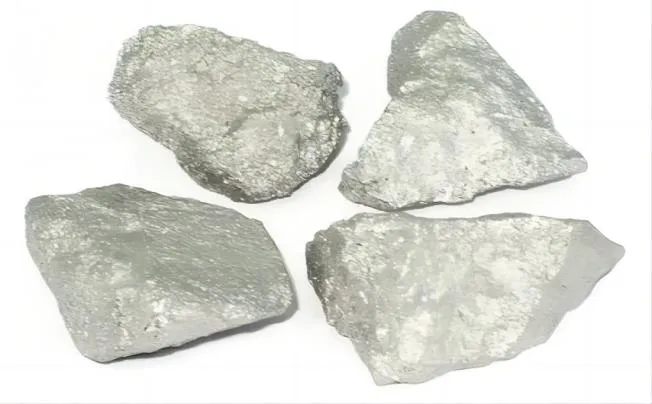What is Ferromolybdenum?
An essential iron-molybdenum metal alloy, ferromolybdenum is mainly used to alloy high-strength low-alloy (HSLA) steel. It has a 60–75% molybdenum concentration. Iron, aluminium, and molybdenum (VI) oxide (MoO3) are heated to create the alloy. Molybdenum is produced in situ when the oxide and aluminium join through an aluminothermic process. Ferromolybdenum can be utilised directly or refined via electron beam melting. Before casting, it is added to molten steel to add molybdenum to the alloy.
The physical properties and applications of ferromolybdenum are as follows: Physical Properties: Appearance: 9 g/cm; Melting Point: 1665–1715 °C; Applications: The most common use of ferromolybdenum is in the production of ferrous alloys, which include military hardware, load-bearing structures, machine tools and equipment, and refinery tubing. Additionally, it is used in the production of stainless steel and other special types of steel that must withstand high temperatures. Finally, ferromolybdenum is frequently added to steel and cast iron to improve their hardenability, strength, and resistance to corrosion.
Manufacturing Process
There are multiple steps in the ferromolybdenum manufacturing process:
Molybdenum (VI) oxide (MoO3) is produced by mining molybdenum.
MoO3 is combined with aluminium and iron oxide.
An aluminothermic process reduces the mixture.
Ferromolybdenum is purified by electron-beam melting.
The finished alloy product is often supplied in bags or steel drums and is created as tiny briquettes or fine powder.
What is Ferromolybdenum 60?
The grade of ferromolybdenum alloy known as “ferromolybdenum 60” has a molybdenum content of roughly 60%. High-strength low-alloy (HSLA) steel is alloyed using this significant iron-molybdenum metal alloy.
Properties and uses of ferromolybdenum 60 are comparable to those of other ferromolybdenum grades. Among the important points are:
Properties: The melting point of ferromolybdenum 60 is between 1665 and 1715 °C, and its apparent density is 9 g/cm.
Applications: To improve the strength, corrosion resistance, and hardenability of steel and cast iron, it is frequently added to the production process. The alloy is suitable for use in the construction, oil and gas, and automotive industries because molybdenum in it improves its resistance to high temperatures.
Applications of Ferromolybdenum 60
- Steel Production: Ferromolybdenum 60 is frequently added during the steel-making process. It is added to improve the final metal product’s strength, corrosion resistance, and hardenability.
- High-Strength Low-Alloy (HSLA) Steel: This steel is made using it as an alloying element. Because of its enhanced mechanical qualities and high strength, HSLA steel is well-suited for use in the construction, oil and gas, and automotive sectors.
- Heat-Resistant Steel: Steel’s resistance to high temperatures is improved with ferromolybdenum 60. It is employed in the creation of heat-resistant steel, which is necessary for use in hot settings.
- Military Hardware and Machinery: The alloy is utilised in the production of military hardware and machinery. Steel’s hardness and hardenability are enhanced, making it more appropriate for use in load-bearing components and structures.
- Production of Stainless Steel: Ferromolybdenum 60 is also utilised in the making of stainless steel. It helps make stainless steel stronger and more resistant to corrosion, which makes it ideal for a variety of uses, including appliances that must endure high temperatures.
- Refinery Tubing: The manufacture of refinery tubing uses ferromolybdenum 60. Due to its characteristics, the alloy can be used in the oil and gas sector, where it is essential that it withstand corrosion and high temperatures.
Characteristics of Ferromolybdenum 60
Molybdenum Content: Ferromolybdenum 60 contains between 50% and 60% molybdenum. The alloy’s desired qualities are partly attributed to its high molybdenum concentration.
Hardenability: To make steel and cast iron more hardenable, ferromolybdenum 60 is frequently added as an additive during manufacturing. It improves the final metal product’s capacity to undergo heat treatment procedures and become harder.
Strength: Steel and cast iron gain strength when ferromolybdenum 60 is added. Because of this, the alloy can be used in equipment and other applications requiring great strength, such load-bearing buildings.
Corrosion Resistance: Steel and cast iron are more resistant to corrosion when ferromolybdenum 60 is added. This is especially crucial in situations where the metal is subjected to corrosive agents or hostile conditions.
Heat Resistance: Ferromolybdenum 60’s resistance to high temperatures is enhanced by the molybdenum included in the alloy. Because of this, it can be used in processes where heat resistance is essential, like the creation of heat-resistant steel.
Physical Properties: The melting point of ferrolybdenum 60 is between 1665 and 1715 degrees Celsius, and its apparent density is 9 g/cm. These characteristics make it easier to handle and process during the production process.









